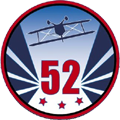

All of the competitors at IAC sponsored contests perform their aerobatics figures in a safe zone called the “Aerobatic Box.” The box keeps competitors in front of the judges.
The box lies over a one square-kilometer area on the ground delimited by white markers visible from the air. The markers show the corners, the center, and the center of each side. One kilometer is about 3,300ft.
The altitude for the bottom of the box varies for different levels of competition. The most advanced pilots may descend as low as 300ft above the ground. The beginning pilots must remain over 1,500ft above the ground.
The top of the box represents a maximum altitude for all pilots of 3,500ft. This maximum keeps the pilots low enough to be seen by the judges.
Aerobatic Judges observe each aerobatic flight from the ground, from a judging area set-back from the middle of the front edge of the box. Typically, five judges will score the flight. Each judge will assign a score to each figure flown, in half point increments, on a scale from zero to ten. A ten is a perfect figure, rarely achieved. Judges deduct points for every difference between the ideal, perfect aerobatic figure and the figure flown by the pilot. The basic deductions are one point for every five degrees of diversion on the roll, pitch, or yaw axis. A roll that stops five-degrees past horizontal, for example, will get a one point deduction. The following image demonstrates a five degree roll error.
An aerobatic sequence is a series of clearly defined aerobatic figures. Aerobatic figures are individual maneuvers such as loops and rolls that begin and end with horizontal, level flight (upright or inverted). The system of diagramming aerobatic figures and sequences was developed by Jose L. Aresti in the early 1960’s. It shows what a pilot is expected to fly in a manner similar to the way music shows what a musician is expected to play.
Each figure in an aerobatic sequence has an assigned difficulty, or "K-factor." The total of the K-factor from all figures gives the total difficulty of a sequence. All of the pilots competing with one-another in one competition category will fly sequences that have the same total difficulty.